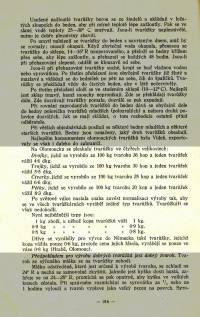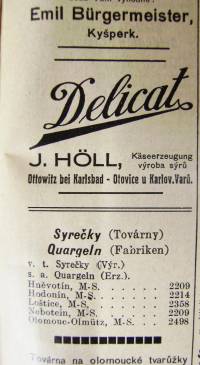Kinds of ripened curd cheese
In the mid-19th century, when domestic production of the ripened curd cheese was more and more converted into the custom-made and especially in the commercial activity, the cheese started to be divided and classified gradually: mainly by its size and party also by its shape. [Kinds of cheese: O-33] The first documented breakdown is shown by the Olomouc curd cheese producer and businessman, H. Selinger, in 1870, Mr. Selinger classified the cheese in the numerical series from „ones“ up to „sevens“. Gradually, however, fewer types, appeared, individual producers were rather adapted to requirements of the customers or region. Production of curd cheese sticks, appeared in Moravia relatively late, most probably inspired by the Höll cheese factory in Otovice near Karlovy Vary; on the other side, production of smaller ripened curd cheese fragments (in Haná region the so called “koski”), is very old, these pieces/fragments resulting from cheese shaping (mainly from their washing), were left to ripen. In the villages round the Moravská Třebová city the curd the curd cheese rings were produced, but according to oral tradition this cheese shape resulted from the problems of the local curd cheese producers with uniform ripening, because the central cheese part remained white and still curd-like. The custom-made products were as follows: „heavy“ or „Vienna twos“; for the Upper and Lower Austria produced „nines,“ or oblong „hearts“ with a higher cumin content.


